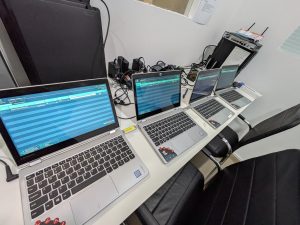Businesses today generate and store vast amounts of data. When it is time to retire laptops, desktops, servers or mobile devices, the question is not just how to dispose of them, but how to do it securely and responsibly. In Singapore, proper IT asset disposal is a critical step in data protection and regulatory compliance.
Disposal is not only about just clearing out old equipment. It involves securing any residual data, ensuring privacy is maintained, and complying with national standards such as the Personal Data Protection Act (PDPA).
What Secure IT Asset Disposal Really Means
Disposing of IT assets goes beyond deleting files or formatting hard drives. Those methods are not enough. Data can often be recovered unless proper data sanitisation or destruction methods are used.
Secure disposal involves two core practices that work hand in hand: certified data erasure and a clearly documented chain-of-custody. Together, they ensure sensitive information does not end up in the wrong hands and that businesses stay compliant with Singapore’s regulatory landscape.
Data Erasure or Data Wiping
Data erasure is a software-based process that permanently removes information from storage devices without damaging the hardware. It is suitable for functional laptops, desktops and servers that are intended for resale, reuse or internal redeployment.
A proper data erasure solution:
-
Complies with global standards such as NIST 800-88
-
Supports wiping of HDDs, SSDs and encrypted drives
-
Generates a digitally signed Certificate of Erasure
-
Reduces human error with automation and audit-ready reporting
Data erasure allows organisations to recover asset value while remaining compliant with data protection policies.

When Physical Destruction is Necessary
For non-functional drives or when added assurance is needed, physical destruction may be more appropriate. Crushing or shredding storage devices ensures complete and irreversible destruction of data.
Another method is degaussing, which uses powerful magnetic fields to demagnetise hard drives and tapes, rendering them unreadable and permanently disabled.
These physical methods are often used when devices are no longer needed and data erasure is not practical. A Certificate of Destruction is provided for records, which is especially important during audits or internal reviews.
Why Chain-of-Custody is Important
Chain-of-custody refers to the documentation and control of IT assets throughout the disposal process. It is designed to prevent data leaks and unauthorised handling.
A proper chain-of-custody includes:
-
Logged asset tracking from collection to final processing
-
Secure, GPS-tracked transportation
-
Sealed containers and handling protocols
-
Real-time status updates and completion reports
Organisations that require compliance with PDPA, ISO or internal risk policies will find this level of control necessary when dealing with confidential data.
When to Start Planning your IT Asset Disposal
Businesses typically consider disposal during:
-
Office relocations or closures
-
Annual IT refresh cycles
-
Cloud migrations
-
Contract terminations or leasing returns
-
Decommissioning of local infrastructure
If your business is facing one of these scenarios, it is important to plan disposal ahead of time. Holding onto old equipment without a proper plan may increase the risk of data leaks or unnecessary storage costs.
Choosing the Right Disposal Partner
A trusted IT asset disposal provider should offer more than just a collection service. Look for a company that provides:
-
Certified data erasure or physical destruction
-
NEA-licensed e-waste collection and handling
-
Transparent documentation including destruction or erasure certificates
-
Secure logistics with chain-of-custody controls
-
Options for recycling and asset value recovery
These services ensure that your data is protected, your equipment is handled responsibly, and your compliance obligations are fully met.
How Arkiva Supports Secure IT Disposal
Arkiva works with businesses of all sizes across Singapore to provide secure and compliant IT asset disposal. Whether you are disposing of a small batch of laptops or decommissioning an entire server room, our team ensures:
-
Certified data erasure or physical destruction based on your needs
-
Environmentally responsible recycling through NEA-approved channels
-
Full asset tracking and chain-of-custody from pickup to processing
-
Certificates for compliance and audit support
-
Buy-back options for eligible devices
Our disposal solutions are designed to reduce risk while supporting your sustainability goals.
Talk to Us
If you are managing retired IT assets and unsure how to dispose of them securely, Arkiva can help. We provide straightforward, compliant and secure solutions backed by proper documentation and responsive service.
Reach out to our team for a consultation or to request a disposal quote tailored to your organisation’s needs.

